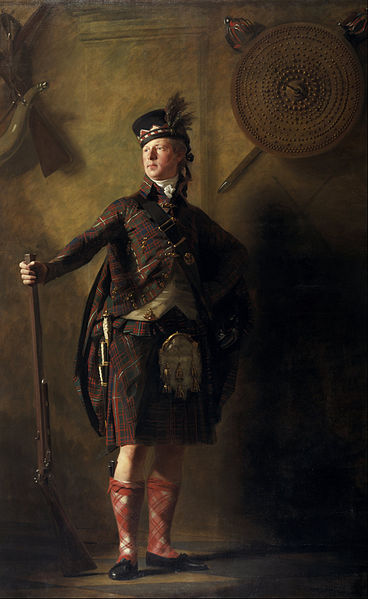The Glengarry bonnet is a traditional Scots cap made of thick-milled woollen material, decorated with a toorie on top, frequently a rosette cockade on the left side, and ribbons hanging behind. It is normally worn as part of Scottish military or civilian Highland dress, either formal or informal, as an alternative to the Balmoral bonnet or Tam o' Shanter.
Alexander Ranaldson MacDonell of Glengarry in 1812.
Glengarry worn on parade (Royal Regiment of Scotland, 2011).
Bonnet has been used as the name for a wide variety of headgear for both sexes—more often female—from the Middle Ages to the present. As with "hat" and "cap", it is impossible to generalize as to the styles for which the word has been used, but there is for both sexes a tendency to use the word for styles in soft material and lacking a brim, or at least one all the way round, rather than just at the front. Yet the term has also been used, for example, for steel helmets. This was from Scotland, where the term has long been especially popular.
Old woman in sunbonnet (c. 1930). Photograph by Doris Ulmann
A bonnet decorated with lace and tulle from the 1880s
Woman's Calash, c.1825. Green silk. Los Angeles County Museum of Art collection, M.87.93
Bonnets in a Swedish fashion plate from 1838.






